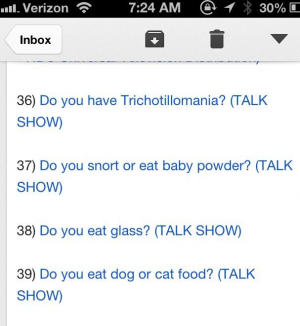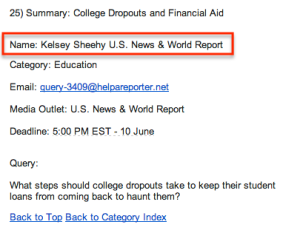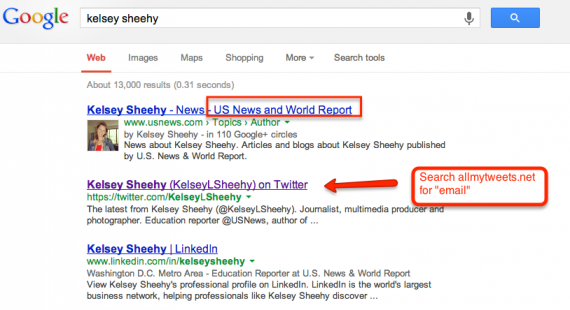HARO, in theory, is a dream come true.
Tons of people are looking for someone - anyone - to help them out, basically in exchange for a link... jackpot, right?!
Not usually. While you may infrequently find a 'diamond in the rough,' most days, queries like this generally clutter your inbox:




So maybe your client eats baby powder for breakfast and cat food for dinner. But it's probably not the type of PR he or she is looking for.
Consider this, however. Every day, hundreds of reporters, journalists, and authorities in your client's industry are so desperate for information, expertise, and stories, that they have taken the time to publish a query on HARO. You think this desperation is a one-time thing? Think again.
Today, a journalist may be looking to discuss your (questionable) eating habits, but tomorrow, he or she may want to talk about creating a balanced diet and healthy lifestyle. If this is your client's industry, creating a warm lead today will help you get the link for tomorrow's story.
Let's discover how to mine today's queries for publications that will make sense for tomorrow's opportunities:
Mine HARO for queries relevant to an industry your client is in. Education, for example:

Although, at this time, my client might not be able to provide advice for college students regarding their student loans, they may have something to contribute to the education section of US News & World Report in the future. I may want to hold onto Kelsey's contact information.
Find the reporter's social profiles and verify that they do, in fact, write for that publication:

Get their email address:
Typically, HARO will encrypt email addresses, but with a minute or two of research, you can easily find their real email address:

What to do with all this information:
1) Throw all the information into a spreadsheet. I include:
- Domain
- DA
- Category/Industry
- Contact Name
- Contact Email
- Query & Date
- The client this contact will be useful for
Alternatively, if you are a Buzzstream user, you can easily add the prospect's details through your Buzzmarker with notes about the queries they've been submitting, include their contact information, and tag it with something like "HARO contacts".
2) Establish a Relationship
Now that you've saved this contact information from your target publications, don't let them go to waste! Follow the journalists on Twitter, subscribe to their blogs, comment on their articles, and re-tweet their posts. Start building a relationship with them. It will give you a leg-up on all the other people sending them cold emails.
3) Wait until you're ready
When you're launching an asset, looking to guest post, or want to be added to a resources page, you can reach out to your new (highly relevant) reporter friend!
TL;DR
When skimming HARO, don't solely pay attention to topics your clients can comment on, but also pay attention to:
1) Industry/publication of queries. Even if the query they submitted doesn't make sense for your client at the time, it doesn't mean the publication doesn't cover topics your client IS an expert in.
2) Reporter contact information. HARO typically encrypts email addresses, but there are other ways to find email addresses: *ahem*.
3) What they're asking for. Even if you can't provide expertise on the query topic, you might be a fit for them in the future, whether that be a guest post, an infographic share, or an addition to their resources page. You could even try checking out their editorial calendar to see if there's anything you can help them out with in advance. (h/t @stephbeadell)
Next time you're looking for someone to promote an asset your client made, or need some guest post prospects, you can refer back to your HARO "rolodex" full of warm prospects.
Other resources: ProfNet is a nice (paid) alternative to HARO, oftentimes with higher-quality queries and publications. ProfNet also usually gives you the direct email address of the reporter.

